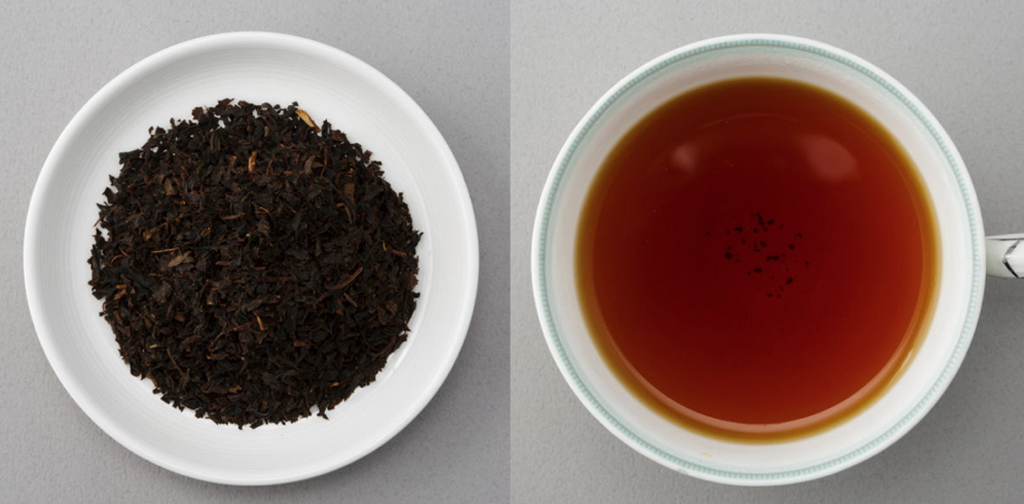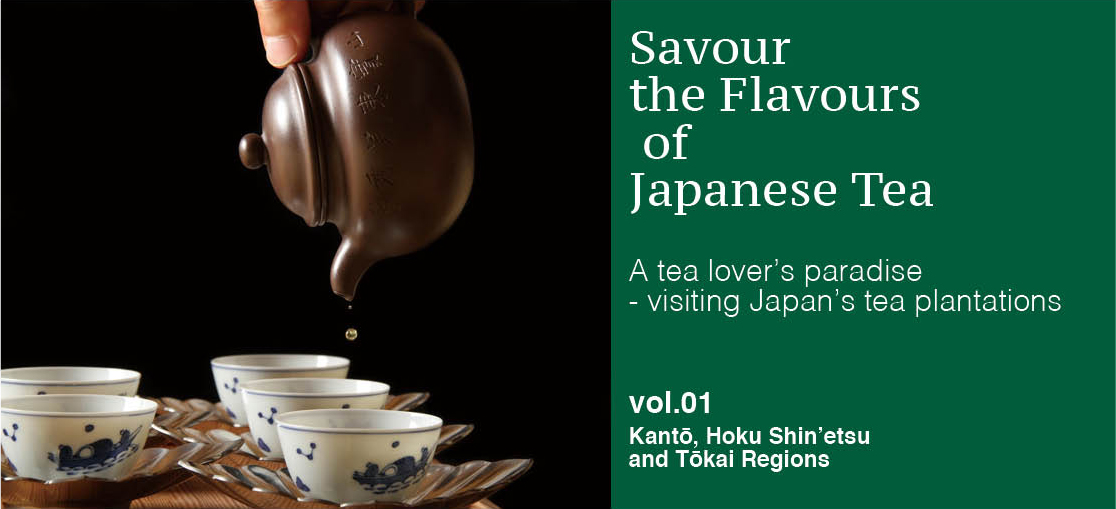
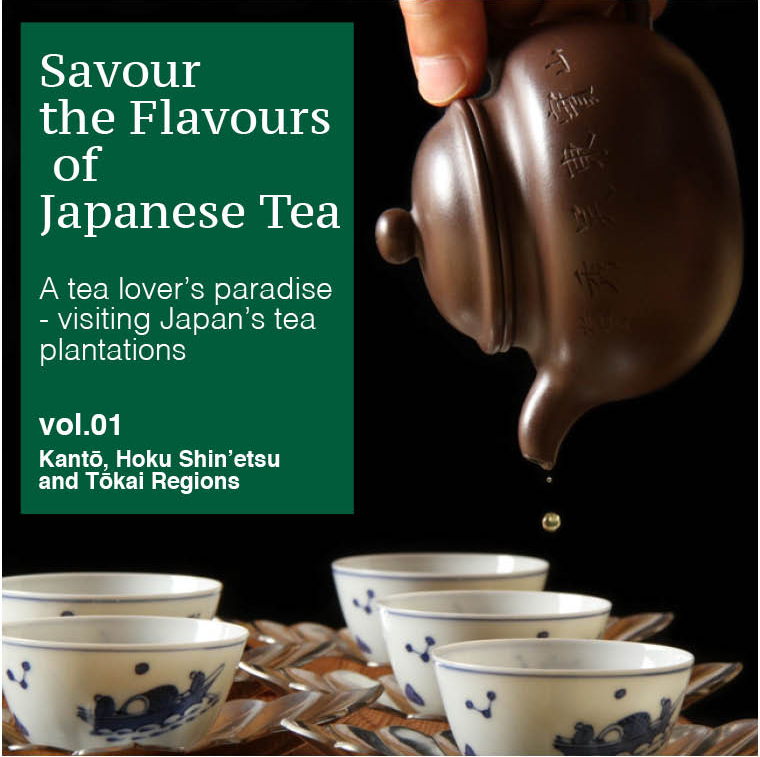
Tea, or o-cha in Japanese, is an integral part of everyday Japanese life and the tea grown in each region of Japan has its own unique characteristics. In this series we introduce well-known varieties of tea from all over Japan.
Text : Sasaki Takashi / English Version : Judy Evans
Keyword : Kakegawa Tea / Minō Shirakawa Tea / Mariko Tea / Nihon-cha / Green Tea / Farming / Horticulture / Murakami Tea / Matcha / Okukuji Tea / Sayama Tea / Ashigara Tea / Honyama Tea
Kantō and Hoku Shin’etsu Regions
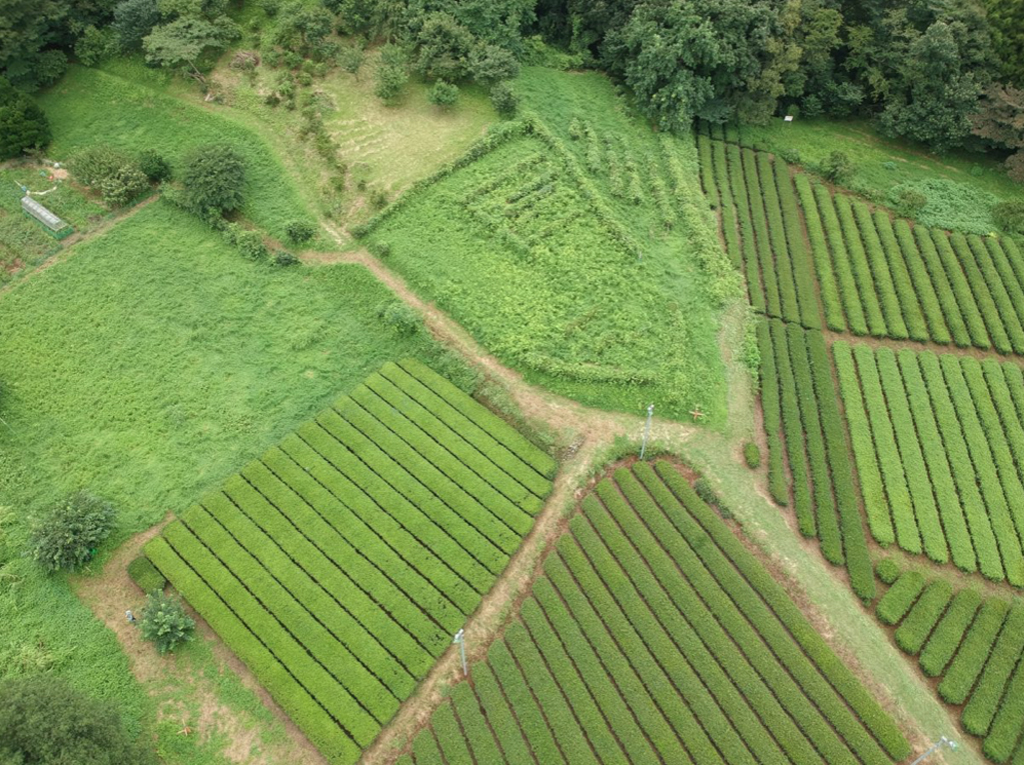
Well known varieties of Japanese green tea include names such as ‘Yabukita’, ‘Yutaka Midori’ and ‘Sayama Kaori’, but these are all cultivars of the same species, Camellia sinensis, the tea bush. Tea prefers temperate growing conditions with plenty of rain and for that reason it does not thrive in the harsh winters of Hokkaidō or northern Honshū.
The northern limit for commercial tea cultivation is generally considered to be Murakami City in Niigata Prefecture. Commercial plantations can be found further north, for instance in Ishinomaki City in Miyagi Prefecture (Monou-cha tea) or Kuroishi City in Aomori Prefecture (Kuroishi-cha tea), but the yields are small and the tea seldom appears on the open market.
Most tea cultivation north of Tōkyō takes place in the area from western Saitama Prefecture to the Sayama Hills area of Tama in western Tōkyō. Sayama Hills once stood alongside Shizuoka and Uji as one of Japan’s top three tea producers, but as the Tama area continues to be developed as a commuter town, tea plantations have rapidly disappeared and production has plummeted.
Despite the smaller yields and constant risk of late spring frosts at tea plantations in the coldest regions, one advantage in these areas is that the tea bushes become dormant through the long winters, storing nutrients within the plant. These stored nutrients are transported to the new spring shoots, giving the new leaves a rich umami flavour.
Murakami-cha, Niigata Prefecture
Murakami City is considered to be the northernmost area in which tea cultivation can be viable as an industry. Despite the heavy snow and the extreme temperature differences from winter to summer, tea has been produced here commercially since the early 1600s. The flavour of the tea is unexpectedly full-bodied and sweet, particularly considering its transparency and clarity of colour when poured.
Okukuji-cha, Ibaraki Prefecture
ea cultivation in Daigo-machi, Ibaraki Prefecture, has a history of around four hundred years. The climate here is cool, wet and misty, and late spring frosts are not uncommon, so the tea is harvested later in the season. However, these growing conditions produce a tea with glossy leaves, and a pleasing fragrance and flavour that can be easily savoured.
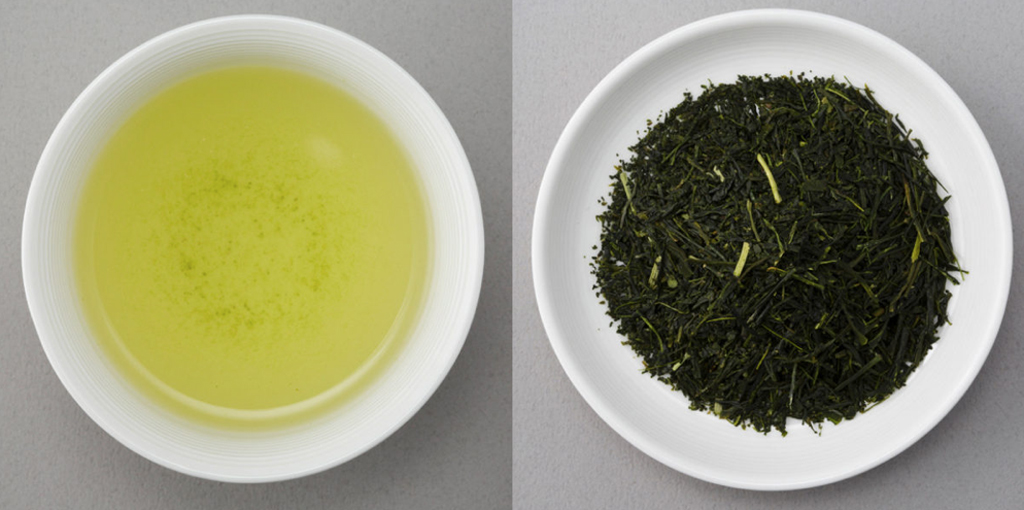
Sayama-cha, Saitama Prefecture and Tōkyō
Saitama Prefecture is the largest tea-growing area north of Tōkyō. Tea grown here and in the adjacent Tama area of Tōkyō is known as Sayama tea. Its characteristic flavour is enhanced by the traditional gentle heating process used in the drying of the leaves. The tea has a full-bodied flavour and a strong fragrance.
Ashigara-cha, Kanagawa Prefecture
Ashigara tea is produced in Tanzawa and in the foothills of Mount Hakone, in Kanagawa Prefecture. This misty, mountainous region with fewer hours of sunlight produces soft leaf shoots. Due to a shorter steaming process, the leaves of the finished tea are longer and a deep green. The tea has a refreshing fragrance, with a good balance between sweetness and mild astringency.
Kaga Bōcha, Ishikawa Prefecture
When anyone mention tea in Ishikawa Prefecture, they are talking about bōcha (twig tea). Kaga Bōcha is a type of hōji-cha (roasted tea), but in this case it is the stems that are roasted. The light roasting method retains the original sweetness of the stems, which can be appreciated alongside the savoury flavour that results from the roasting process. Although there has been a decrease in the number of tea plantations in the prefecture, bōcha continues to be as popular as ever.

Tōkai Region
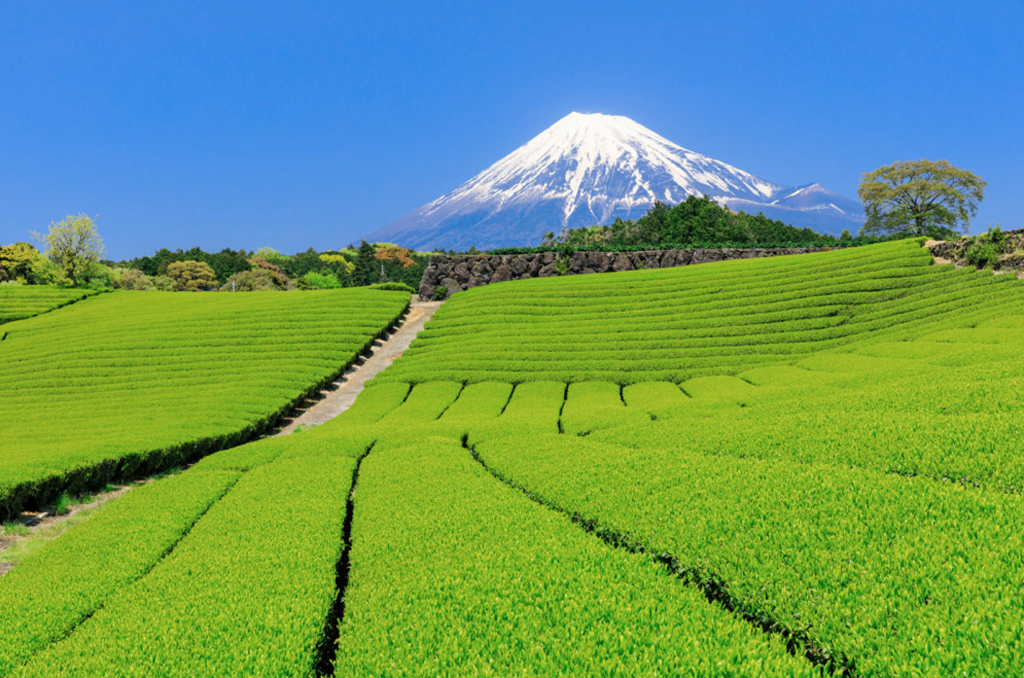
With a temperate climate and plenty of sunshine, the Tōkai region between Tōkyō and Mie Prefecture is the best suited of all Japan’s regions for the cultivation of tea. Shizuoka Prefecture alone has 18,500 hectares (45,700 acres) planted in tea, yielding a gross harvest of 33,400 tons per year (2012 Ministry of Agriculture, Forestry and Fisheries figures).
Tea cultivation began in the Tōkai Region during the Kamakura Period (1185 – 1333). Later, tea production thrived here under the protection of the the first shōgun, Ieyasu Tokugawa, who is said to have loved tea. Following the Meiji Restoration in 1868, members of the shogunate government were driven out of Tōkyō and many of them settled in the unproductive tableland area of Makinohara. Here they set about putting the land into cultivation, with tea as one of their crops. From this historical background, Shizuoka Prefecture went on to become Japan’s most productive tea-growing region.
Tea produced in Shizuoka Prefecture is collectively referred to as ‘Shizuoka tea’, but there are numerous well-known varieties grown throughout the region, which we introduce below. As well as steep, mountainous growing areas with extreme temperature swings, tea is also cultivated on the temperate plains. Teas grown in these varied conditions have their own unique characteristics to be enjoyed.
Mie Prefecture in the west of the Tōkai region sits in third place after Shizuoka and Kagoshima as one of Japan’s biggest tea producing areas. This region is Japan’s biggest producer of kabuse tea, a high quality leaf tea grown under shade cloth.
Honyama-cha, Shizuoka Prefecture
Honyama tea is grown near the Abe River that flows through central Shizuoka Prefecture. The characteristics of Honyama tea are its transparent golden colour and aromatic fragrance, and its balance of sweetness and astringency. The historical association with Ieyasu Tokugawa, who was fond of this matured tea, led to the district-wide adoption of the long maturation process. The complexity of flavour of the tea in autumn is quite different to that of the new spring tea.
Kakegawa-cha, Shizuoka Prefecture
Kakegawa tea is known for its ‘deep steaming’ process. Tea cultivation in this area adheres to the chagusaba (tea cultivation and grassland management) farming method whereby grass harvested from the surrounding areas is used as compost and mulch for the tea bushes. Renowned for its promotion of biodiversity and the production of high quality tea, the chagusaba method has been designated as a ‘globally important agricultural heritage system’. Motenashi tea is made from the leaves of tea grown near Nissaka-shuku, the 23rd Station of the old Tōkaidō route. This is a fine-leafed tea with a rich flavour that lessens its astringency.
Minō Shirakawa-cha, Gifu Prefecture
This is a tea with a refined flavour, cultivated amid the scenic beauty of the Shirakawa-Chō area of eastern Gifu Prefecture. Tea plantations are dotted all over this mountainous area, where mist rises from the rivers and temperature differences between summer and winter are large. The tea has a richness of aroma and a full-bodied flavour that befits a mountain tea.
Nishio Matcha, Aichi Prefecture
The area in and around Nishio City in Aichi Prefecture is known for the cultivation of tencha tea, which is ground in a stone mill to produce the powdered matcha tea used in the tea ceremony. The highly valued ‘Asahi’ variety, which is carefully hand plucked, has a brilliant green colour and is deeply flavoursome.

Ise-cha, Mie Prefecture
When it comes to kabuse-cha (tea grown under shade cloth), Mie Prefecture boasts Japan’s largest production. For the cultivation of real kabuse-cha, the tea bushes are covered with black cloth for about two weeks prior to harvest. This blocks direct sunlight, lightening the colour of the leaves and increasing the umami component of the tea. The well-rounded flavour is similar to the highly regarded Gyokuro tea.
Mariko-cha, Shizuoka Prefecture
Mariko, in Shizuoka, is where production of black tea in Japan began, in line with the Meiji Government’s policies of the late 1800s. Having blazed the trail for the cultivation of black tea in Japan, Mariko is one of the areas responsible for the current popularity of domestically cultivated black tea. The tea has a ruby hue and a mellow flavour with low astringency. It is best appreciated without the addition of milk or sugar.
